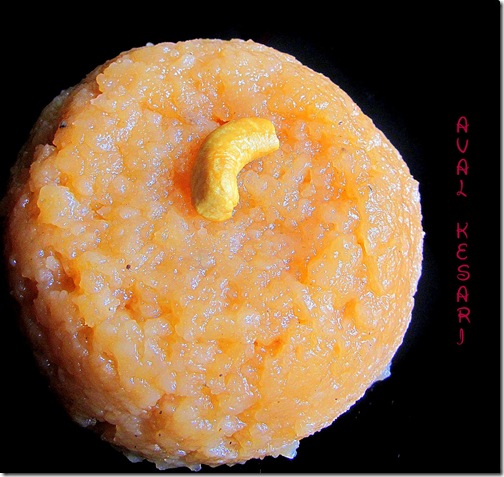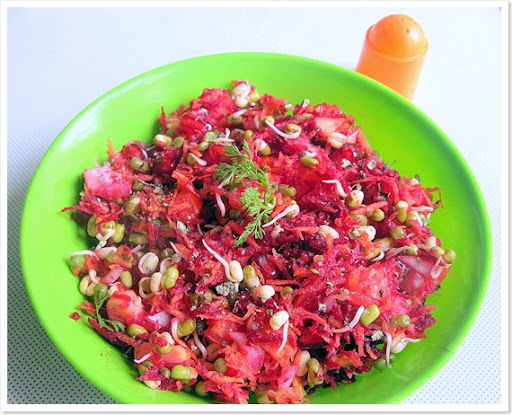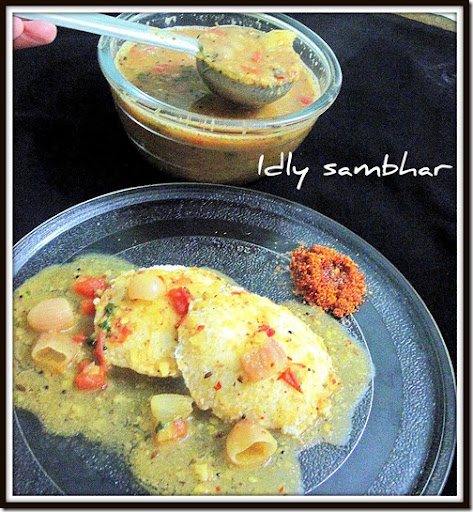viernes, 31 de agosto de 2012
miércoles, 29 de agosto de 2012
Meaty Cookbooks Part 1 -- Specialty Meats

I eat a lot less meat than I used to. But I am buying it mostly from butchers I know and trust, usually from Bryan's in Laurel Village. So when I do cook meat, generally a couple times a week, I want it to be something special. My guess is that I am not alone and perhaps that accounts for the huge boom in meat cookbooks?
For 2012, I hope you buy and cook better quality meat. These cookbooks will certainly help.
The Brisket Bookis subtitled a love story with recipes. It literally had me laughing out loud with it's cartoons, jokes, stories and more. If you are Jewish, Irish, or even a Texan, brisket is your soul food. The book pays homage with recipes, wine pairings, poems, and everything you need to know to make a version that will make you fall in love. This book and a brisket from Snake River Farms would be the best gift EVER.
Recipes to try include: Brisket burger, braised fresh brisket in stout and onions, brisket with ginger, orange peel and tomatoes, basic barbecue brisket, corned beef with parsley sauce
Goatis the first cookbook I've seen dedicated to meat, milk and cheese from that animal. They say leeks were not commonly available in grocery stores until Julia Child starting featuring them on her TV show. Hard to imagine, isn't it? I'm going to venture the same thing about goat. It accounts for 70% of the red meat eaten worldwide; it's sustainable, surprisingly healthy (less fat, cholesterol and calories than chicken, beef, pork or lamb) and is growing in popularity. I know, you probably can't find it in your local grocery store yet, but soon perhaps... Meanwhile this book will introduce you to farms, teach you new recipes, and entertain you with funny stories and anecdotes.
Recipes to try include: Goat cheese quesadillas, wheat germ banana muffins, braised meatballs with artichoke and fennel, goat mole (negro, rojo and verde versions) one of several goat curries
The latest in a long line of porcine cookbooks,The Whole Hog Cookbook covers chops, loin, shoulder, bacon, spareribs and yes, offal. Libbie Summers is the granddaughter of a pig farmer, she's a chef, food stylist, and knows how to butcher a pig. It's amazing how glamorous she looks posing with pigs! What's not surprising is how appetizing her recipes look. The only bone to pick that I have with this book is the recommendation to use Smithfield products. I am dismayed at their abysmal treatment of workers, animals and the environment and would never buy, let alone suggest their brand. This does not change the fact that the recipes and the book, are quite wonderful. Just please, use pork that comes from the best sources whenever possible.
Recipes to try include: Rosemary bacon scones, sweet apple scrapple, Lula Mae's cola-braised pork shoulder, hog-tied and hungry chili, West African pork stew
martes, 28 de agosto de 2012
Aggie's Granny’s scones

It's taken me a couple of days to get the recipe I promised you from Aggie MacKenzie's new book. I went for these scones because they look so delicious and involve so few ingredients. I suspect there's more to them than meets the eye - they look so fabulously light but have a go. This is what Aggie says about them:
'These are legendary. My mother's mother made them almost daily (bread was a once-a-week delivery in the remote north-west of Scotland) and they were eaten with crowdie, which is a cream cheese that's sharp and dense. My mother does these too, and they are the talk of the area. And of course it's the recipe I always use. A few ingredients to get together, sure, but my goodness the results are unbeatable.'
Prep: 15 minutes
Cook: around 10 minutes
Makes 16 scones
40g/1½oz/3 tbsp butter
1 level tbsp golden (light corn) syrup
1 medium egg
300ml/10fl oz/1¼ cups buttermilk (if you can get it) or milk
450g/1lb/3¼ cups plain (all-purpose) flour
1 tsp bicarbonate of soda (baking soda)
1 heaped tsp cream of tartar
1 heaped tsp salt
Preheat the oven to the hottest setting (Have checked this with Aggie who says 240°C/Gas 9) and place a large baking sheet inside. Melt the butter and syrup together in a pan. Mix the egg and buttermilk together. Put the dry ingredients in a large bowl. Add both the wet mixtures to the dry ingredients and stir with a large metal spoon. (If you use milk instead of buttermilk, the mix might seem too wet but fear not.)
Have lots of flour on your work surface and empty the mix on to it. Sprinkle on a good layer of flour. Gently roll out into a rough circle about 2cm/¾in thick. Cut up into 16 pieces; some will be square, some will be corners, but they'll all taste gorgeous.
Arrange on the hot baking sheet (no need to grease), spaced a little apart. Put in the oven for about 7-8 minutes until nicely golden. Cool on a wire rack.
From Aggie's Family Cookbook, published by Pavilion Books, price £20.
jueves, 23 de agosto de 2012
AVAL KESARI / POHA KESARI
I came to know about this kesari from my school friend Swarna.It was very new to me because i've tasted kesari made with rava / semiya. When she told about this i found it interesting. I made for my friday pooja . It came out well and tasted excellent. We loved it.Its very simple to do. Try this and let me know ladies !!
INGREDIENTS
- POHA / THICK AVAL - 1/2 cup
- Sugar - 3/4 cup ( Add 1 tbsp less if u want mild sweet)
- Water - 3/4 cup ( U can replace water with milk too )
- Ghee - 2 -3 tbsp
- Cardamom powder - 1/4 tsp
- Cashews - A few
- Orange -red food color / Kesari color - a pinch
METHOD
- Heat a kadai with a tbsp of ghee and fry the cashews. Remove and set aside.
- Now add the aval/poha in the same kadai and fry till it gets roasted with a nice aroma.U can add another tbsp of ghee while roasting.
- Now soak the roasted poha in little water for 10 mins to make it soft. This enhances quick cooking. ( Add the water just to cover the poha)
- Take the measured water in a bowl by adding food color.Allow it to boil
- Now add the roasted poha and Cover cook for 10 mins stirring in between.
- Once the poha gets cooked, add sugar and mix well.
- Add a tbsp of ghee at this stage. Mix well.
- Stir constantly for few minutes ( may be 10 - 12 mins).At one stage the kesari becomes non sticky and leaves the sides of the pan.
- Add the roasted cashews and cardamom powder . Mix well and transfer to a bowl .
Serve hot !!
TIPS :
- I wanted mine to be mushy .So i soaked poha for more time and added 1/4 cup more water while cooking .
- Here I've mentioned the actual ratio given by my friend.So adjust the sugar & water ratio accordingly .
- Add more ghee while u make for ur guests ;)
lunes, 20 de agosto de 2012
A Visit to Straus Creamery & Cowgirl Creamery

In the San Francisco Bay Area we are very lucky to have such incredible dairy products produced in our own backyard. Though many enjoy the milk from Straus Family Creamery and cheeses from Cowgirl Creamery very few have seen exactly where those products come from. Last week I got a chance to visit both, thanks to Cathy Strange, the Global Cheese Buyer for Whole Foods Market. While visiting California she took a small group of writers to visit both the dairy and the cheesemaking facility, at Tomales Bay and Petaluma. I learned what makes Albert Straus, Peggy Smith and Sue Conely such pioneers.

Albert Straus is a second generation dairyman. He took over his parents farm which was established in 1941. He transformed what was a struggling conventional dairy and converted it to the first organic organic dairy West of the Mississippi River in 1994. Despite all the challenges of running a dairy farm today it is thriving. In moving forward, he embraced many of the practices from the past, including using glass bottles, selling milk that is not homogenized and bringing back Jersey cows and Jersey crossbreeds. Jersey cows are smaller and produce less volume of milk so they were bypassed in favor of Holsteins but yield a richer, higher fat milk.

To be organic, all the feed must be organic and free of growth hormones rBGH and rBST, but Straus goes one step further, verifying that the feed is GMO free as well. The cows are milked twice a day, and the young calves live in clean and idyllic quarters with plenty of access to pasteurized milk which helps them grow to be particularly healthy and robust.
All power at the dairy is offset by a methane gas digester that takes waste from the cows and turns it into electricity.

Straus has led by example, encouraging many local dairies to 'go organic.' Now 50% of the dairies in Marin and Sonoma counties are organic.

Peggy Smith and Sue Conley co-founders of Cowgirl Creamery got into the cheese business, inspired by the Straus matriarch, and Albert's mother, Ellen Straus. Both women came from the restaurant world and began by creating fresh organic cheeses from Straus milk. They still make clabbered cottage cheese, creme fraiche, and fromage blanc, but what they are most known for are some of their unique aged cheeses, especially the soft ripened bloomy rind Mt. Tam, Inverness and my favorite, the luxurious triple cream washed rind Red Hawk, so pungent and buttery, which won best of show at the American Cheese Society in 2003.

Peggy and Sue work with local organizations like Marin Organic and the Marin Agricultural Land Trust (where Sue is currently board chair) to ensure that farmland is protected.

At their main cheesemaking facility in Petaluma, not far from Straus dairy they use the freshest milk, and are particularly gentle with the cheese curds, creating very high quality cheeses.
Thanks Cathy! Come back and let's visit some more cheesemakers soon.
While Straus Family Creamery is not regularly open to tours, you can book ahead if you wish to visit Cowgirl Creamery or take a class.
sábado, 18 de agosto de 2012
MIXED FRUITS AND VEGETABLE SALAD WITH SPROUTS
I wanted to make a simple , healthy salad with sprouts, mixed vegetables and fruits for a long time. I googled so many basic salad recipes and came out with my version.Here i used grated beetroot .So the color of beetroot dominates here. Otherwise it would be a colorful salad to attract ur kids. Make ur choice of adding or omitting the veggies and fruits given in this recipe.
INGREDIENTS
For 1 person
- Sprouted green gram - 1 handful
- Carrot - 1 no(grated)
- Beetroot - 1/2 no ( grated) (optional)
- Big onion - 1/2 no (chop finely)
- Cabbage - Few leaves ( chop finely)
- Pomegranate - 1 handful
- Guava - 1/2 no ( Chop into squares)
- Coriander leaves - A few
- Lime juice - Few drops
- Pepper powder - 1/2 tsp
- Salt - As needed
| |
METHOD
- Take a wide bowl and mix all the ingredients given above. Squeeze a few drops of lime juice. Mix well and serve !!
Variations
- Add two pinches of chat masala to the above recipe to give a nice flavor. But adjust the salt as chat masala contains salt.
- U can also add chopped tomato pieces and cucumber pieces when u want to serve instantly otherwise the salad may become watery.
- I usually pack the above salad for my hubby's lunch box without tomato and cucumber.
jueves, 16 de agosto de 2012
IDLY SAMBHAR - MIL'S VERSION
I've posted varieties of idly sambhar i learnt from my MOM & MIL.This one is my MIL's special sambhar.My hubby loves this a lot . So i make at least once in a week.It tastes similar to hotel sambhar.
INGREDIENTS
- Tamarind - A small gooseberry size
To pressure cook:
- Toor dal - 1/4 cup
- Potato - 1 no (big)
- Turmeric powder - A pinch
- Water - As needed.
To Roast & grind :
- Oil - 1/2 tsp
- Methi seeds - 1/4 tsp
- Coriander seeds - 1tbsp
- Channa dal - 1.5 tsp
- Red chilly - 1 no (big)
- Hing - 1/4 tsp
To saute:
- Shallots / small onion - 15 nos
- Tomato - 1 no (cut into small pieces)
- Curry leaves - a few
- Sambhar powder - 1/2 tsp
- Salt & water - As needed
To temper:
- Oil - 1 tbsp
- Mustard seeds - 1/2 tsp
- Jeera - 1/2 tsp
- Urad dal - 1/2 tsp
To garnish:
- Coriander leaves - a few
- Ghee - 1 tbsp (for flavor)
METHOD:
- Soak the tamarind in warm water for 20 mins and take the extract.Set aside.
- Pressure cook all the ingredients given under 'to pressure cook' till one whistle.Mash the dal and set aside.
- Heat oil in a kadai and roast all the items given above in the same order till nice aroma arises.Powder and keep aside.
- In the same kadai , add oil and saute the items given under :to saute: .
- Saute till tomato turns mushy.Then add the sambhar powder , tamarind extract , hing & salt.
- Allow it to boil till the onion gets cooked.
- Now add the mashed dal & powdered spices.
- Mix well & boil for sometime.(. Be careful while adding the powder because it may form lumps.So gently stir in & sprinkle the powder simultaneously.)
- Finally temper all the ingredients given under 'to temper' and switch off the stove. Garnish with coriander leaves.Transfer to the serving bowl and top it with a tbsp of ghee .( i add only when there is a guest ;) )
Enjoy with soft idlies & crispy dosas by adding sesame oil!!
Variations :
| ** For the exact restaurant style sambhar , add a few curry leaves while roasting the ingredients given for sambhar powder. ** Also try adding a tsp of grated coconut for additional flavor while roasting. ** Add a small piece of jaggery along with the tamarind extract. (i add very rarely) ** Add veggies like brinjal , Drumstick and carrot to make it more healthy. In this sambhar we should add very less tamarind extract.So it will taste mild and less spicy. If u want it more spicy & tangy , add pinched red chillies while tempering and squeeze some drops of lime juice before serving. |
KITCHEN CLINIC :
| TOOR DAL : Pigeon peas are nutritionally important, as they contain high levels ofprotein and the important amino acids methionine, lysine, and tryptophan. In combination with cereals, pigeon peas make a well-balanced human food. Other common namesOther common names are तुवरि (tuvari) in Sanskrit, arhar(Hindi/Bangla:অরহর), Rohor (Assamese), Rahar (Nepali), red gram, toovar/toor (Gujarati/Marathi/Punjabi), tuvaram paruppu (Tamil: துவரம்பருப்பு),tuvara (Malayalam :'തുവര' ),togari (Kannada), Kandi(కంది)(Telugu), Yewof ater (Amharic), gandul, guandul, guandu, Congo pea, Gungo pea, Gunga pea, and no-eye pea. USES: It is useful in the treatment of internal organ swelling. Some herbal practitioners/researchers are of the opinion that it diminishes the swelling of internal organs like stomach, liver, intestines etc. In case of wound or cancer of these organs it is helpful in reducing them. Its recommended usage is: Green leaves of Pigeon peas around 10 grams along with 7 black peppers should be finely ground and mixed in water and then taken as a drink. Green leaves of Pigeon peas ground in water and added to half boiled water should be applied externally on the affected body part. Pigeon peas should be cooked in water (as dal, an Indian dish) and its water should be given to the patient. |
viernes, 10 de agosto de 2012
Apple Blackberry Galettes
Pastry
Repeat with the second sheet of pastries.



